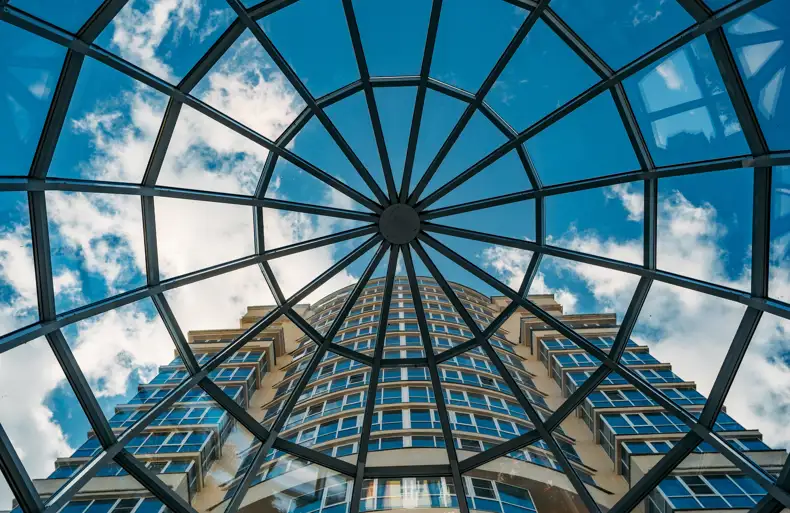Blog | Investment
It’s coming home: sports clubs become real estate’s biggest fans

In recent years, the intersection of sports and real estate has become increasingly prominent, with major teams on both sides of the Atlantic embarking on ambitious development projects. These ventures go beyond merely upgrading stadiums; they aim to transform surrounding areas into bustling hubs of commercial and residential activity. This trend underscores a strategic shift where sports franchises leverage their brand power and fan bases to maximise revenue streams and diversify income avenues.
Lessons from America
In the United States, several major sports teams have led the charge in integrating real estate projects with their sporting facilities. A prime example is the Los Angeles Rams and their SoFi Stadium, part of the vast Hollywood Park development. Spanning 298 acres, this project includes retail spaces, office buildings, residences, a hotel, and green areas, creating a new urban centre in Inglewood, California. The development is a testament to how sports infrastructure can be a catalyst for wider urban renewal.
Similarly, the Atlanta Braves have transformed the area around Truist Park with The Battery Atlanta. This mixed-use development combines residential units, office spaces, retail outlets, and entertainment venues, offering a vibrant lifestyle destination for both fans and residents. By investing in such projects, teams like the Braves are creating continuous revenue streams that extend beyond game days.
European clubs: embracing urban regeneration
Closer to home, European sports teams are adopting similar strategies. Tottenham Hotspur‘s redevelopment of its stadium area is a leading example. The new Tottenham Hotspur Stadium is surrounded by a comprehensive development plan that includes residential units, a hotel, sports facilities, and commercial spaces. The additional nearby Heart of Hale regeneration project is further testament to the wider regeneration opportunities around stadia.
In Spain, Real Madrid has undertaken a massive renovation of the Santiago Bernabéu Stadium. The redevelopment includes a retractable roof, expanded commercial areas, and enhanced digital experiences for fans, turning the stadium into a year-round destination.
An aerial view of the Etihad Stadium
Manchester City has undergone significant redevelopment across the wider area around the Etihad Stadium, transforming it into the Etihad Campus. Key developments include the City Football Academy, stadium expansion, Eastlands regeneration framework forming a broader initiative of residential and commercial developments and, most recently, the completion of the Co-op Live arena, a state-of-the-art 23,500-capacity arena and entertainment venue.
It’s not just major teams
Closer to home for me, being Bristol born and bred, an agglomeration of various sports teams in Bristol are embarking on plans to redevelop the surrounding Ashton Gate stadium to provide a new 4,000-seater Sport & Convention Centre (SCC), 232-room hotel, 536-space multistorey car park, 125 residential units and 28,000 sq ft of commercial/office space.
The vision of this project, which received the planning green light last year, is to generate sufficient sustainable income for the organisation to help power the club’s successes into the future, with less requirement for additional subsidies from the Landsdowne family.
These real estate projects are not just about expanding physical spaces; they are strategic investments designed to maximise long-term revenue for sports franchises. By developing mixed-use areas, teams can generate income from various sources, including leasing retail spaces, selling residential units, and hosting events in new commercial facilities. This diversification reduces reliance on game-day revenues and enhances financial stability. As we are seeing, today’s venues are operational 24/7, 365 days a year.
“These real estate projects are not just about expanding physical spaces; they are strategic investments designed to maximise long-term revenue for sports franchises”
Moreover, these developments often lead to increased property values and local economic growth, creating a positive feedback loop that helps both the teams and the communities they are part of. The integration of ultramodern facilities, modern amenities, and vibrant community spaces helps attract fans, tourists, and new residents, further boosting economic activity.
Potential downsides
While the growth of real estate in sports presents many opportunities, it is not without risks. Rising interest rates and increasing development costs pose significant challenges to these ambitious projects. Higher interest rates can lead to more expensive borrowing costs, which can strain the financial viability of large-scale developments. Additionally, escalating construction costs, driven by inflation and supply chain disruptions, can further impact project budgets and timelines.
Everton FC’s new stadium project at Bramley-Moore Dock in Liverpool illustrates some of these potential downsides. Originally estimated to cost around £500m, the project has faced escalating costs due to rising prices for materials and labour with the stadium now estimated to cost circa £1bn and heavily behind schedule. These financial pressures have required the club to secure additional funding and meant they faced a points deduction last season for breaching the Premier League’s profit and sustainability regulations (PSRs).
The trend of integrating sports and real estate is likely to continue, with teams increasingly recognising the value of such investments. However, the financial environment will require careful planning and risk management. By creating multi-functional spaces that cater to diverse needs, sports franchises are redefining their role in urban environments. These projects not only enhance the fan experience but also contribute to sustainable urban development and economic prosperity (if done correctly).
As this trend continues, it creates multiple opportunities for real estate investors and developers alike. For developers, partnering with clubs to develop specific projects, or “piggy backing” off these developments to generate further nearby regeneration. For investors, once complete these projects offer acquisition opportunities through assets like the hotels or commercial spaces created through these ventures, or even potential minority equity stakes from significantly improved and stabilised revenues.
First published by Green Street News (formerly React News)
Related Insights

A graduate's insight into the 2024 Alternative Market
In the dynamic world of real estate investment, the alternative sector continues to carve out its unique niche, offering a di...

Why high net worth individuals continue to be attracted to the UK Real Estate?
Despite some challenging financial circumstances in the UK, the country’s real estate sector continues to attract investment ...

Commercial Investment National Industrial Market Update
Industrial / logistics remains the dominant sector across all commercial markets, a trend we expect to continue through 2024 ...

Commercial Investment National Office Market Update
Allsop sees this as an opportune moment to enter the market before further base rate reductions potentially drive-up competit...